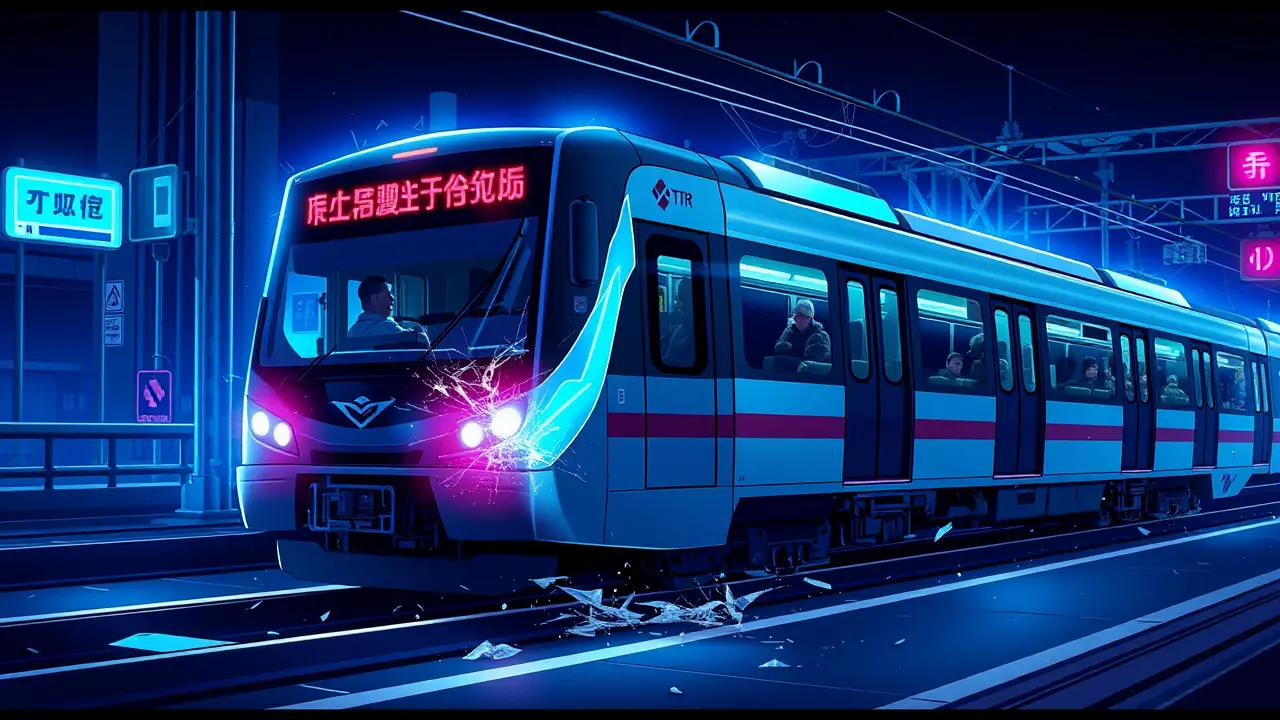
Otheraccidents & disastersTransport Disasters
Minibus Collides with Train in Hong Kong, 12 Injured.
JO
John Parker
23 hours ago7 min read
A 64-year-old minibus driver was arrested in Hong Kong following a catastrophic collision that saw his vehicle ram into and partially derail a Light Rail train in Tuen Mun during the early hours of Sunday, leaving twelve people injured in a scene of shattered glass and twisted metal. The incident, occurring at precisely 12:43 am on Tsing Lun Road in the New Territories, involved the Lok Ma Chau-bound minibus on route 44B, which allegedly proceeded after the driver 'saw the wrong traffic light,' according to a source familiar with the preliminary investigation.The front of the minibus was severely compromised, its windscreen completely blown out, while the train car suffered significant structural damage, halting service on a critical line and prompting an immediate, multi-agency emergency response that saw firefighters and paramedics scrambling to the chaotic site to triage the wounded. This is not an isolated event in Hong Kong's complex transport ecosystem, where the intricate dance between road vehicles and the extensive Light Rail network has historically been a point of concern, with previous near-misses and minor incidents at similar junctions highlighting persistent challenges in traffic signal clarity, driver fatigue, and the high-stakes integration of different transit modes in densely populated urban corridors.The arrested driver now faces a rigorous probe by Hong Kong police, with potential charges ranging from dangerous driving causing grievous bodily harm to contravention of traffic ordinances, as the Transport Department and the MTR Corporation launch parallel internal reviews, examining everything from the specific sightlines and timing of the traffic signals at that intersection to the crashworthiness of the Light Rail trains, which were first introduced in the 1980s and have undergone several safety upgrades. The human cost reverberates beyond the twelve injured, disrupting the pre-dawn routines of hundreds of commuters and casting a pall over a community already navigating the city's relentless pace, raising urgent questions for policymakers about whether existing safety protocols and infrastructure are sufficient to prevent a recurrence, especially as the city continues to evolve.Expert commentary from transport safety analysts suggests that while Hong Kong's overall record is strong, this accident underscores a vulnerability at grade crossings, potentially necessitating a city-wide audit of similar intersections, the implementation of more advanced warning systems, or even a re-evaluation of driver training requirements for public light bus operators, a workforce often grappling with long hours and demanding routes. The broader context of this crash touches upon Hong Kong's unique status as a Special Administrative Region of China, where local authorities manage day-to-day affairs, including transport, but where major incidents can quickly attract scrutiny from central government bodies concerned with stability and public safety, making the outcome of this investigation a matter of significant local and potentially regional interest.The consequences will likely be multifaceted, impacting insurance claims, potential civil lawsuits from the injured, operational changes within the minibus franchise system, and possibly accelerating planned safety enhancements to the Light Rail network, which serves as a lifeline for residents in the northwestern parts of the city. Historically, similar collisions in other major metropolises with mixed rail and road systems, such as London or Tokyo, have led to sweeping reforms, from the mandatory installation of automatic braking systems to redesigned junction layouts, providing a potential roadmap for Hong Kong authorities as they seek to balance efficiency with an uncompromising commitment to passenger and pedestrian safety in the wake of this alarming derailment.
#featured
#Hong Kong
#minibus
#Light Rail
#collision
#derailment
#Tuen Mun
#arrested driver
#injuries
Stay Informed. Act Smarter.
Get weekly highlights, major headlines, and expert insights — then put your knowledge to work in our live prediction markets.
© 2025 Outpoll Service LTD. All rights reserved.